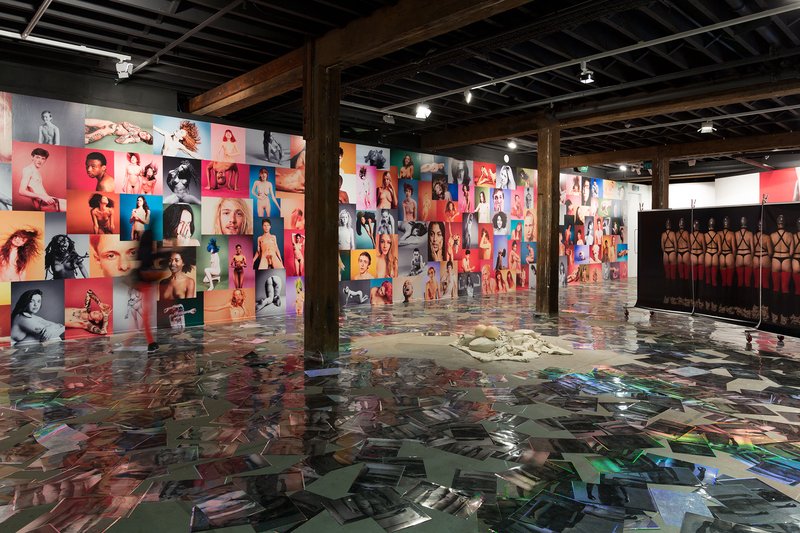The Public Body .01
THE PUBLIC BODY .01 currently showing at Artspace, explores contemporary representations of the the naked and/or sexualised body.
Co-curator Talia Linz discusses the assessment of risk in context of this exhibition.
THE PUBLIC BODY .01 currently showing at Artspace, explores contemporary representations of the the naked and/or sexualised body.
Co-curator Talia Linz discusses the assessment of risk in context of this exhibition.

The Public Body .01 situates itself intentionally in a complex space concerning contemporary representations of the body and, in particular, the naked and/or sexualised body. The works in the exhibition deal with notions around the types of bodies that are objectified, fetishised, marginalised, privileged and rendered invisible by mainstream representation and popular imagery. Thinking rationally, there’s nothing in the gallery that we all can’t access instantly on our phones or computers – or see often, without explicit consent, in public spaces in the form of advertisements etc. Moreover, the body and, in particular, the unclothed body, has also marked the history of art perhaps more than any other form or subject.
Dealing with sex and the body touches on our shared humanity and is something that artists have been doing for centuries and we believe should continue to be supported to do so. Having said that, we recognise that everyone has different personal parameters for what is potentially offensive or considered obscene, so throughout the planning process we were constantly weighing up and debating the importance of including certain content that we felt was key to the ideas of the exhibition alongside the potential risks involved.
As a leading contemporary arts organisation with a mandate to support risk and experimentation, we strongly believe that it’s our responsibility to endorse artistic expression and exhibit works that push boundaries, challenge social norms and accepted standards.
It's also our responsibility to ensure that we are doing our due diligence as caretakers of a gallery freely accessible to the public and that involves managing risks for every exhibition.
For The Public Body .01 we prepared a detailed risk assessment document and talked through every work with our Board and with Arts Law, as well as consulting NAVA and their guidelines about censorship and previous cases in Australia. It was particularly eye opening to compare our laws with others internationally and face the prospect of potential punitive measures for exhibiting works that have been shown at leading institutions such as the Tate and MoMA. We spoke to peer arts institutions about their experiences and ultimately decided that rather than self-censor pre-emptively it was imperative for us to forge ahead with an exhibition we felt was critical and unique.
The most common accusation against such works would be indecency or obscenity. These mean different things to different people and terms such as ‘standards of public decency’ and ‘reasonable adult’ are not precisely defined in the legislation. Our key concern was that an audience member would make a complaint to the police about the content of the show and that could have repercussions, so preventative steps we’ve implemented include:
There is always the risk that works selected for display may cause offence to some sections of the community but Artspace believes that artistic and institutional freedom are indispensible to a mature and civilised society. Artworks displayed in galleries are generally not classified, and when they are, the context in which they are displayed and their artistic merit is generally taken into account. We felt that Artspace’s longstanding reputation and the fact that all of the artists represented in this exhibition have national and international reputations (many at the top of the field with esteemed gallery representation and exhibition of their work in major exhibitions and collections worldwide), spoke to the legitimacy of the exhibition and the works included.
THE PUBLIC BODY .01, 2016, curated by Talia Linz and Alexie Glass-Kantor, is on exhibition at Artspace, Sydney until 23 October 2016.
Image: THE PUBLIC BODY .01, 2016, installation view, Artspace, Sydney. Photo: Jessica Maurer